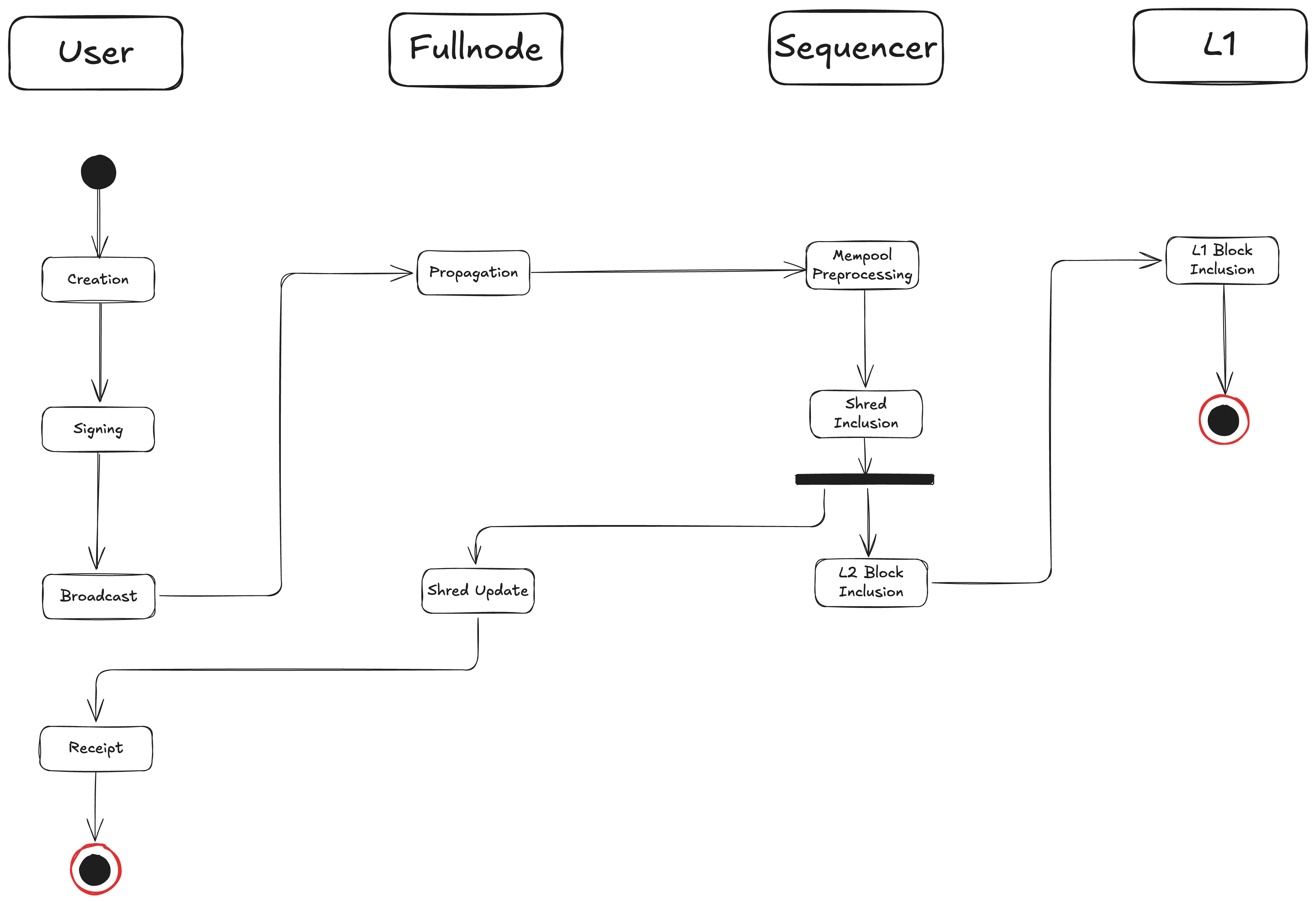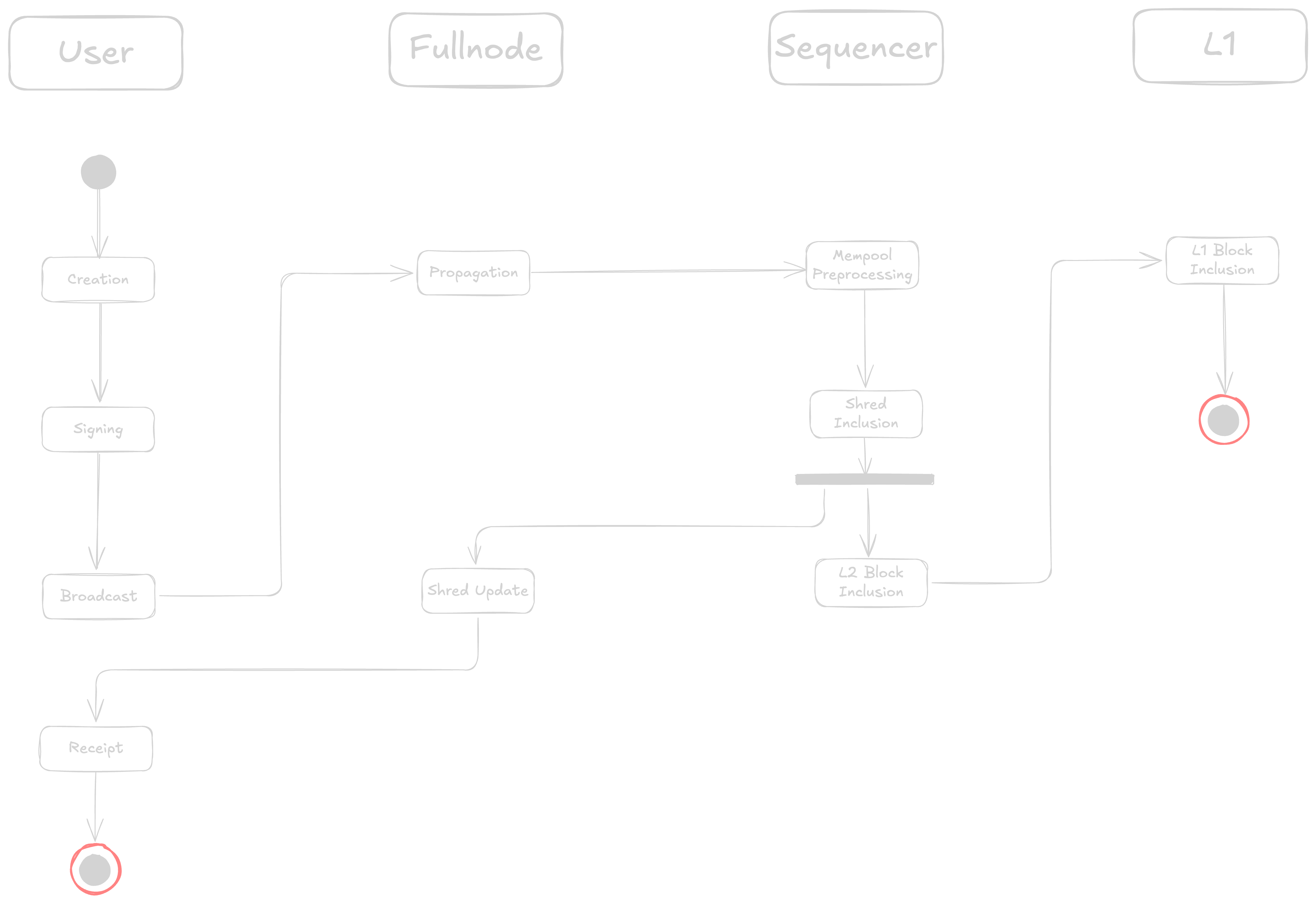Transaction Lifecycle
RISE's transaction lifecycle facilitates a streamlined process, designed to reduce latency to as low as possible. Unlike other blockchain, RISE aims to provide near-instant responses to users' transactions.


Transaction Preparation & Broadcasting
The lifecycle of a transaction starts with a user creating and signing a transaction, and submitting it to an RPC node via his frontend.
P2P Propagation
After receiving the transaction from the user, the RPC node performs some sanity check and then broadcasts this transaction to the sequencer using the P2P network.
Mempool Pre-Execution
As described in the CBP, the transaction is pre-executed as soon as it lands in the sequencer's mempool. The CBP makes use of idle time to execute transactions while other tasks are happening. This is one of the way we reduce E2E latency for transaction processing.
Pending transactions (i.e, residing in the mempool) are included in a
Pending transactions are pre-executed while sitting in the mempool, therefore, at the time of
The sequencer broadcasts a
L2 Block Inclusion
After a predefined period of time (i.e, L2 blocktime),
L1 Block Inclusion
Periodically, L2 blocks are batch-submitted to the DA layer and the L1 for finalizing. At this state, transactions are considered safe (if no fraud challenge is triggered).